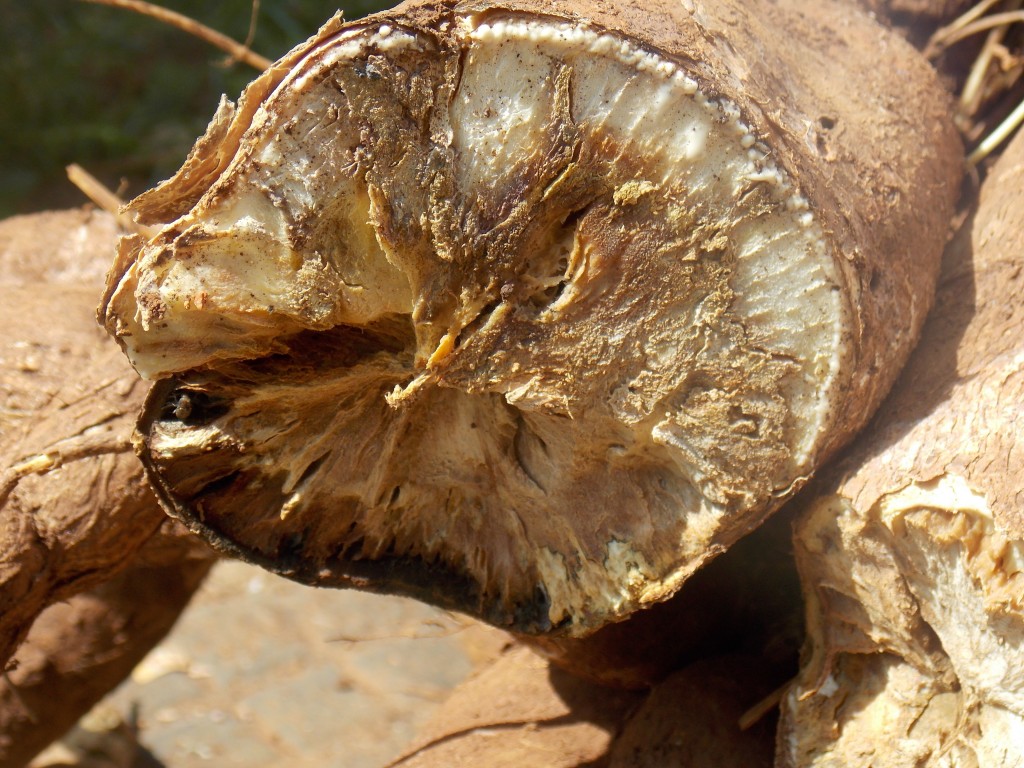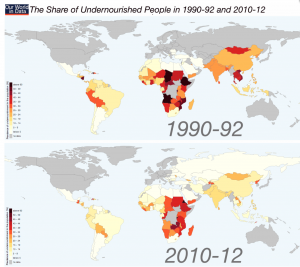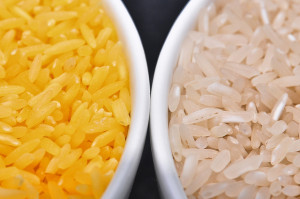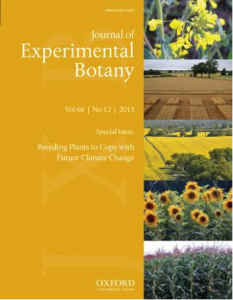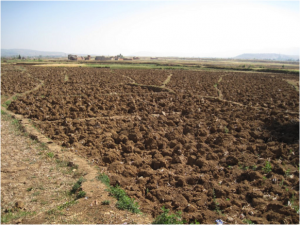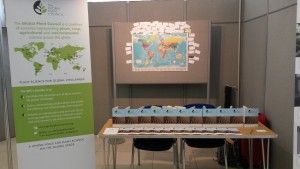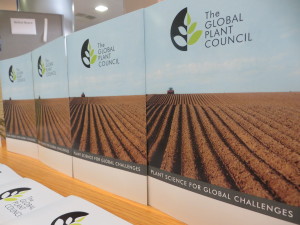This week’s post was written by Katie Tomlinson, a PhD student at the University of Bristol, UK, who spent three months as an intern at the National Crops Resource Research Institute in Uganda. She fills us in on the important research underway at the Institute, and how they communicate their important results to local farmers and benefit rural communities.
Over the summer, I had a great time at the National Crops Resources Research Institute (NaCRRI) in Uganda. I’m currently in the second year of my PhD at the University of Bristol, UK, where I’m researching how the cassava brown streak disease (CBSD) viruses are able to cause symptoms, replicate and move inside plants. I was lucky enough to be given a placement at NaCRRI as part of the South West Doctoral Training Partnership Professional Internship for PhD Students (PIPS) scheme, to experience the problem for myself, see the disease in the field, meet the farmers affected and investigate the possible solutions.
Cassava is a staple food crop for approximately 300 million people in Africa. It is resilient to seasonal drought, can be grown on poor soils and harvested when needed. However, cassava production is seriously threatened by CBSD, which causes yellow patches (chlorosis) to form on leaves and areas of tubers to die (necrosis), rot and become inedible.
Despite being identified in coastal Tanzania 80 years ago, CBSD has only been a serious problem for Uganda in the last 10 years, where it was the most important crop disease in 2014–2015. The disease has since spread across East Africa and threatens the food security of millions of people.
NaCRRI is a government institute, which carries out research to protect and improve the production of key crops, including cassava. The focus is on involving farmers in this process so that the best possible crop varieties and practices are available to them. Communication between researchers and farmers is therefore vital, and it was this that I wanted to assist with.
When I arrived I was welcomed warmly into the root crop team by the team leader Dr Titus Alicai, who came up with a whole series of activities to give me a real insight into CBSD. I was invited to field sites across Uganda, where I got to see CBSD symptoms in the flesh! I helped to collect data for the 5CP project, which is screening different cassava varieties from five East and Southern African countries for CBSD and cassava mosaic disease (CMD) resistance. I helped to score plants for symptoms and was fascinated by the variability of disease severity in different varieties. The main insight I gained is that the situation is both complex and dynamic, with some plants appearing to be disease-free while others were heavily infected. There are also different viral strains found across different areas, and viral populations are also continually adapting. The symptoms also depend on environmental conditions, which are unpredictable.
I also got to see super-abundant whiteflies, which transmit viruses, and understand how their populations are affected by environmental conditions. These vectors are also complex; they are expanding into new areas and responding to changing environmental conditions.
It has been fascinating to learn how NaCRRI is tackling the CBSD problem through screening different varieties in the 5CP project, breeding new varieties in the NEXTGEN cassava project, providing clean planting material and developing GM cassava.

Tagging cassava plants free from Cassava brown streak disease for breeding. Image credit: Katie Tomlinson.
And there’s the human element…
In each of these projects, communication with local farmers is crucial. I’ve had the opportunity to meet farmers directly affected, some of whom have all but given up on growing cassava.
Challenging communications
Communicating has not been easy, as there are over 40 local languages. I had to adapt and learn from those around me. For example, in the UK we have a habit of emailing everything, whereas in Uganda I had to talk to people to hear about what was going on. This is all part of the experience and something I’ll definitely be brining back to the UK! I’ve had some funny moments too… during harvesting the Ugandans couldn’t believe how weak I was; I couldn’t even cut one cassava open!
Real world reflections
I’m going to treasure my experiences at NaCRRI. The insights into CBSD are already helping me to plan experiments, with more real-world applications. I can now see how all the different elements (plant–virus–vector–environment–human) interact, which is something you can’t learn from reading papers alone!
Working with the NaCRRI team has given me the desire and confidence to collaborate with an international team. I’ve formed some very strong connections and hope to have discussions about CBSD with them throughout my PhD and beyond. It’s really helped to strengthen collaborations between our lab work in Bristol and researchers working in the field on the disease frontline. This will help our research to be relevant to the current situation and what is happening in the field.
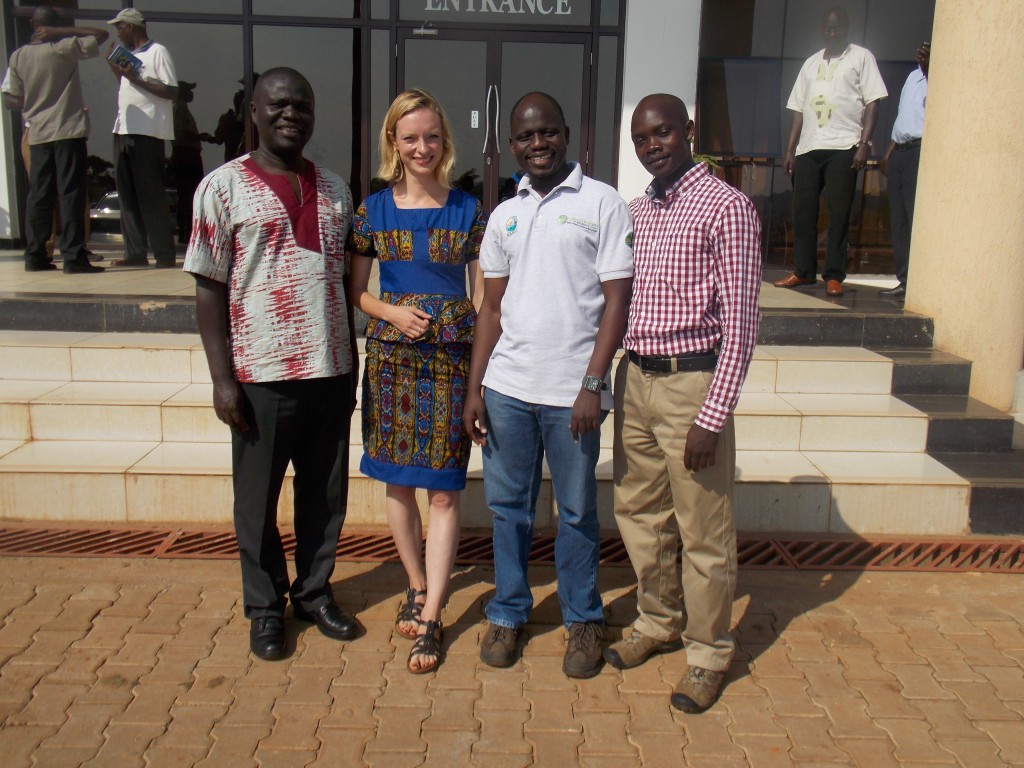
Saying goodbye to new friends: Dr. Titus Alicai (NaCRRI root crops team leader), Phillip Abidrabo (CBSD MSc student) and Dr. Esuma Williams (cassava breeder). Image credit: Katie Tomlinson.


